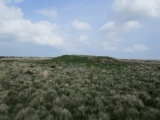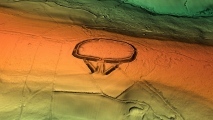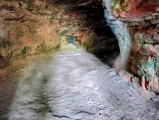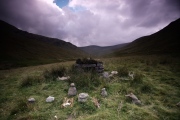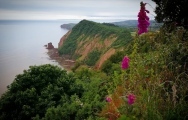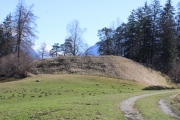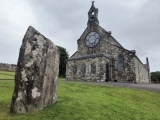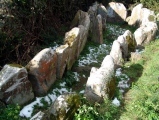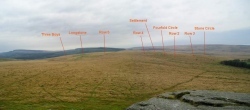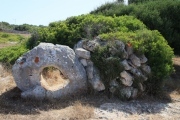Andy Burnham's Blog, page 61
July 17, 2024
Newton Mulgrave Moor RB10
Like its neighbour RB9 which is about 300ft to the north east, this bronze age round barrow is also very prominent within the landscape. Both barrows stand out especially clearly against the skyline when viewed from the west and south.
Published on July 17, 2024 05:37
July 16, 2024
Blackbury Camp
Top image: A 3D view of the digital terrain model of Blackbury Camp by Rouven Meidlinger. In Prehistoric Hillforts in Devon, (Devon Books, publisher to Devon County Council) author Aileen Fox describes this ancient oval-shaped hillfort as 'important' and with 'an unusual entrance'. The excavation in 1952-54 by the Devon Archaeological Society showed that the main gate had been an imposing structure (see English Heritage noticeboard photograph lower down our page.)
Published on July 16, 2024 02:50
July 12, 2024
Court Cave
One of the well known Wemyss Caves, and the one situated nearest to East Wemyss. There is a car park a few metres from the entrance. The cave contains a number of carved symbols, mostly believed, from their style, to be Pictish.
Published on July 12, 2024 09:25
July 10, 2024
Tigh Nam Bodach
The pagan shrine named Tigh nam Bodach of uncertain founding date is located in Glen Cailliche (the Crooked Glen of the Stones), north of Loch Lyon. The shrine is made up of a modest stone structure that houses a family of three bell shaped water stones from the river bed of the Lyon.
Published on July 10, 2024 10:49
High Peak
Ancient Settlement in Devon. There are remains of ramparts and ditches still visible on site. The recent excavations have confirmed the dating of High Peak, with occupation in two discrete unrelated time frames – the Neolithic (4000-2000 BC) and Early Medieval (early historic period following the end of the Roman Empire – 6th century AD).
Published on July 10, 2024 10:37
July 9, 2024
Cazis Petrushügel
Between 1938 and 1951 the forest engineer W. Burkhardt explored the distinctive settlement plateau of the Petrus Hill of Cazis, in Graubünden, Switzerland. He discovered the remains of Neolithic settlements. Because of the thick-walled ceramic finds, he assigned this to the Horgener culture. Numerous bone and antler artifacts were also found, along with several stone axe blades made of serpentinite, a large number of saw plates, various flint and radiolarite instruments, such as arrowheads and blade tools, and rock crystal.
Published on July 09, 2024 03:40
July 8, 2024
Lisnagun Standing Stone
Standing Stone in the grounds of the Sacred Heart Roman Catholic church, Darrary, Co. Cork. The building and grounds are lovely. This stone is very wide but thin and tall. The top of this stone is very flat and tapers upwards gently, tallest at the north side.
Published on July 08, 2024 04:42
July 7, 2024
Le Mont Ubé
This passage grave was discovered in 1848 too late to save the capstones from quarrymen. The chamber and passage were originally covered by a mound and probably surrounded by a peristalith of upright stones.
Published on July 07, 2024 09:05
July 5, 2024
Shovel Down
Near the northeastern corner of Dartmoor, to the west of the old stannary town of Chagford at Shovel Down, are a multitude of remains which together make up the Shovel Down complex of ceremonial sites. The site includes an open stone circle, a fourfold cairn circle, a long single stone row, 6 double stone rows or avenues, a giant longstone, several other standing stones, several cairns, and the remains of an ancient settlement.
Published on July 05, 2024 10:14
Binidalinet
Published on July 05, 2024 10:12

